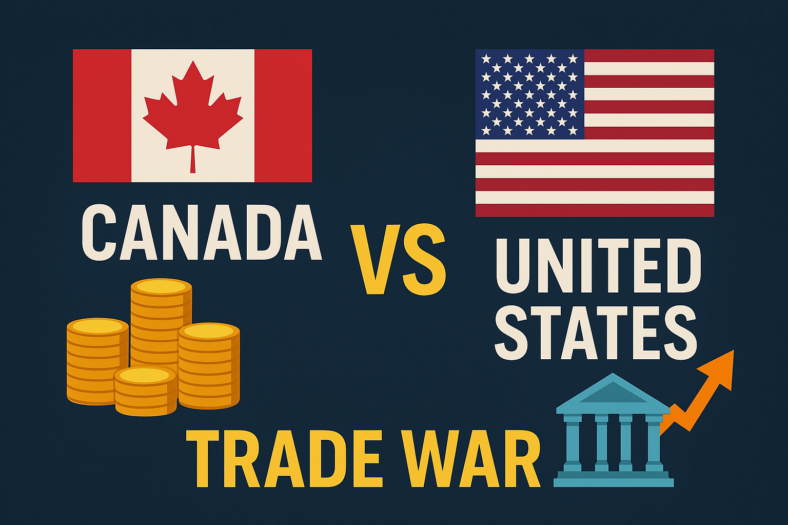Welcome to our comprehensive guide on the best robo-advisors in Canada! Investing in the financial markets can be complex and intimidating, but robo-advisors offer a simple and accessible way for Canadians to grow their wealth and achieve their financial goals. With the rise of digital investment platforms, robo-advisors have gained popularity for their low fees, automated portfolio management, and personalized investment strategies tailored to individual investors.
In this guide, we’ll explore everything you need to know about the top robo-advisors operating in Canada. From understanding how robo-advisors work and their key features to comparing different platforms based on fees, investment options, account types, and customer service, we’ll provide you with the insights and information necessary to make informed decisions about where to invest your money.
Whether you’re a beginner investor looking to get started with a simple and hands-off approach or an experienced investor seeking a cost-effective and efficient way to manage your portfolio, this guide aims to help you find the best robo-advisor that meets your needs and aligns with your financial goals.
So, let’s dive into the world of robo-advisors in Canada and discover how these innovative platforms can help you build wealth and secure your financial future with ease and confidence.
What are robo-advisors and how do they work?
Robo-advisors in Canada are digital investment platforms that provide automated, algorithm-based portfolio management services to investors. These platforms use technology and data-driven algorithms to create and manage diversified investment portfolios tailored to individual investors’ financial goals, risk tolerance, and time horizon. Here’s how robo-advisors work:
Questionnaire: When investors sign up with a robo-advisor, they typically start by completing a questionnaire or risk assessment survey. This questionnaire gathers information about their investment objectives, risk tolerance, financial situation, and investment preferences. Based on the responses, the robo-advisor generates a personalized investment strategy and asset allocation plan.
Portfolio Construction: Using the information collected from the questionnaire, the robo-advisor’s algorithm constructs a diversified investment portfolio comprised of a mix of asset classes such as stocks, bonds, and alternative investments. The asset allocation is based on modern portfolio theory principles and aims to optimize risk-adjusted returns for the investor’s specific financial situation.
Automated Rebalancing: Once the portfolio is set up, the robo-advisor continuously monitors and rebalances the portfolio to maintain the target asset allocation over time. This involves periodically buying and selling assets within the portfolio to realign the allocation with the target percentages. Rebalancing helps investors stay on track with their long-term investment objectives and manage risk effectively.
Cost-Efficiency: Robo-advisors typically offer low fees compared to traditional financial advisors and actively managed mutual funds. They achieve cost-efficiency by leveraging technology to automate investment processes and minimize human intervention. This allows robo-advisors to offer their services at a fraction of the cost of traditional advisory services.
Online Platform: Robo-advisors provide investors with access to their investment accounts through user-friendly online platforms or mobile apps. Investors can monitor their portfolios, track performance, view account statements, and access educational resources and customer support services through the platform.
Passive Investing: Many robo-advisors employ a passive investing approach, primarily using index funds or exchange-traded funds (ETFs) to build investment portfolios. Passive investing aims to replicate the performance of a broad market index rather than trying to outperform the market through active stock picking or market timing.
Tax Efficiency: Some robo-advisors offer tax-efficient investing strategies to help investors minimize their tax liabilities and maximize after-tax returns. These strategies may include tax-loss harvesting, which involves selling investments at a loss to offset capital gains and reduce taxable income.
Overall, robo-advisors in Canada provide a convenient, cost-effective, and accessible way for investors to build diversified investment portfolios and achieve their financial goals with minimal effort and expertise required. By leveraging technology and data-driven algorithms, robo-advisors offer personalized investment solutions that align with investors’ individual needs and preferences.
How to choose the best robo-advisor in Canada
Choosing the best robo-advisor in Canada requires careful consideration of various factors to ensure that the platform aligns with your investment goals, preferences, and financial situation. Here’s a step-by-step guide on how to choose the best robo-advisor:
Determine Your Investment Goals: Start by clarifying your investment objectives, risk tolerance, time horizon, and financial goals. Consider whether you’re investing for retirement, saving for a major purchase, or building wealth over the long term. Understanding your investment goals will help you choose a robo-advisor that offers the appropriate investment strategies and portfolio options.
Assess Fees and Costs: Compare the fees and costs associated with different robo-advisors, including management fees, account fees, and underlying fund expenses. Look for platforms that offer competitive pricing and transparent fee structures to minimize your investment costs and maximize your returns over time.
Review Investment Options: Evaluate the investment options and asset classes offered by each robo-advisor, including stocks, bonds, ETFs, and alternative investments. Consider whether the available investment options align with your investment preferences and risk tolerance. Look for diversification across asset classes and geographic regions to reduce risk and maximize potential returns.
Consider Account Minimums: Some robo-advisors may require a minimum initial investment to open an account. Determine whether you meet the account minimum requirements of the robo-advisor you’re considering and whether the minimum investment amount fits within your budget and investment goals.
Evaluate Portfolio Management: Assess the portfolio management approach and investment methodology used by each robo-advisor. Look for platforms that offer personalized portfolio construction based on your risk profile and investment objectives. Consider whether the robo-advisor employs passive or active investment strategies and whether they offer tax-efficient investing solutions.
Review Platform Features: Evaluate the features and functionality of the robo-advisor’s online platform or mobile app. Look for user-friendly interfaces, intuitive navigation, and access to tools and resources such as portfolio tracking, performance reporting, educational materials, and customer support. Consider whether the platform offers features like automatic rebalancing, dividend reinvestment, and goal tracking to help you stay on track with your investment goals.
Assess Customer Service: Consider the level of customer service and support offered by each robo-advisor. Look for platforms that provide responsive customer support through multiple channels, such as phone, email, live chat, and social media. Evaluate the availability of customer service representatives and the quality of assistance provided to address your questions and concerns effectively.
Check Regulatory Compliance: Ensure that the robo-advisor is regulated by the relevant regulatory authorities in Canada, such as the Investment Industry Regulatory Organization of Canada (IIROC) or provincial securities regulators. Regulatory compliance helps protect investors’ rights and ensures transparency and integrity in the financial markets.
Read Reviews and Testimonials: Take the time to read reviews and testimonials from other investors who have used the robo-advisor’s platform. Pay attention to both positive and negative feedback to gain insights into the platform’s strengths and weaknesses from real users’ perspectives.
Consider Additional Services: Some robo-advisors may offer additional services beyond basic portfolio management, such as financial planning, retirement planning, tax optimization, and socially responsible investing options. Consider whether these additional services align with your needs and preferences and add value to your overall investment experience.
By following these steps and conducting thorough research, you can choose the best robo-advisor in Canada that meets your investment objectives, aligns with your preferences, and helps you achieve your financial goals with confidence and peace of mind.
Pros and cons of robo-advisors
Robo-advisors in Canada offer numerous benefits, but they also come with certain drawbacks. Here’s a breakdown of the pros and cons:
Pros:
Low Fees: Robo-advisors typically charge lower fees compared to traditional financial advisors and actively managed mutual funds. This cost-effectiveness can result in higher net returns for investors over the long term.
Accessibility: Robo-advisors make investing accessible to a broader range of investors, including beginners and those with limited investment knowledge or experience. The user-friendly interfaces and automated portfolio management make it easy for anyone to get started with investing.
Diversification: Robo-advisors offer diversified investment portfolios constructed using modern portfolio theory principles. By spreading investments across multiple asset classes and geographic regions, robo-advisors help reduce risk and increase the likelihood of achieving long-term investment goals.
Personalized Portfolios: Robo-advisors use algorithms to create personalized investment portfolios tailored to each investor’s financial goals, risk tolerance, and time horizon. This customization ensures that the investment strategy aligns with the investor’s individual needs and preferences.
Automated Rebalancing: Robo-advisors automate the process of portfolio rebalancing, ensuring that the asset allocation remains aligned with the target percentages over time. This helps investors stay on track with their investment objectives and maintain a disciplined approach to investing.
Tax Efficiency: Some robo-advisors offer tax-efficient investing strategies, such as tax-loss harvesting, to help investors minimize their tax liabilities and maximize after-tax returns. These strategies can add value to investors’ portfolios over the long term.
Cons:
Limited Human Interaction: Robo-advisors lack the personalized advice and human interaction offered by traditional financial advisors. While algorithms can create personalized investment portfolios, they cannot provide the same level of tailored guidance and support as a human advisor.
Risk of Technology Glitches: Robo-advisors rely on technology to automate investment processes and manage portfolios. There is a risk of technology glitches, outages, or errors that could disrupt service and impact investors’ ability to access their accounts or execute trades.
Complex Financial Situations: Robo-advisors may not be suitable for investors with complex financial situations or unique investment needs. While they offer customized investment portfolios, they may not be able to address specialized investment strategies or planning requirements.
Limited Investment Options: Robo-advisors typically offer a limited selection of investment options compared to traditional brokerage accounts. Investors may have fewer choices in terms of individual stocks, bonds, or alternative investments available in their portfolios.
Lack of Flexibility: Robo-advisors may lack the flexibility to accommodate changes in investors’ financial goals or circumstances. While portfolios are tailored initially, investors may need to adjust their investment strategies over time, which may require additional customization or guidance.
Potential for Over-reliance on Technology: Investors who use robo-advisors may become over-reliant on technology and automation, potentially overlooking the importance of ongoing financial education and monitoring of their investment portfolios.
Overall, while robo-advisors offer numerous benefits such as low fees, accessibility, and personalized portfolios, investors should consider the limitations and risks associated with these platforms. By understanding the pros and cons of robo-advisors, investors can make informed decisions about whether they are suitable for their investment needs and preferences.
Robo-advisors vs financial advisors
Robo-advisors and financial advisors offer distinct advantages and serve different types of investors based on their needs, preferences, and financial situations. Here’s a comparison between robo-advisors and financial advisors:
Robo-Advisors:
Low Fees: Robo-advisors typically charge lower fees compared to traditional financial advisors. They achieve cost-effectiveness by leveraging technology to automate investment processes and minimize human intervention.
Accessibility: Robo-advisors make investing accessible to a broader range of investors, including beginners and those with limited investment knowledge or experience. The user-friendly interfaces and automated portfolio management make it easy for anyone to get started with investing.
Diversification: Robo-advisors offer diversified investment portfolios constructed using modern portfolio theory principles. By spreading investments across multiple asset classes and geographic regions, robo-advisors help reduce risk and increase the likelihood of achieving long-term investment goals.
Personalization: Robo-advisors use algorithms to create personalized investment portfolios tailored to each investor’s financial goals, risk tolerance, and time horizon. This customization ensures that the investment strategy aligns with the investor’s individual needs and preferences.
Automated Rebalancing: Robo-advisors automate the process of portfolio rebalancing, ensuring that the asset allocation remains aligned with the target percentages over time. This helps investors stay on track with their investment objectives and maintain a disciplined approach to investing.
Limited Human Interaction: Robo-advisors lack the personalized advice and human interaction offered by traditional financial advisors. While algorithms can create personalized investment portfolios, they cannot provide the same level of tailored guidance and support as a human advisor.
Financial Advisors:
Personalized Advice: Financial advisors offer personalized investment advice and comprehensive financial planning services tailored to each client’s unique needs and goals. They take into account factors such as risk tolerance, time horizon, financial situation, and life events to develop customized strategies.
Holistic Financial Planning: Financial advisors provide holistic financial planning services beyond investment management, including retirement planning, tax planning, estate planning, insurance planning, and education funding. They help clients navigate complex financial decisions and make informed choices about their financial future.
Flexibility and Customization: Financial advisors offer flexibility and customization in investment strategies, allowing clients to pursue specialized investment approaches or unique financial goals. Advisors can adjust investment portfolios and strategies based on changing market conditions, economic outlooks, or client preferences.
Emotional Support and Guidance: Financial advisors offer emotional support and guidance during periods of market volatility or uncertainty. They help clients stay disciplined and focused on their long-term financial objectives, providing reassurance and perspective during turbulent times.
Comprehensive Services: Financial advisors provide a wide range of financial services, including investment management, retirement planning, tax planning, estate planning, risk management, and education planning. They serve as trusted partners who help clients navigate all aspects of their financial lives.
Higher Fees: Financial advisors typically charge higher fees compared to robo-advisors, reflecting the personalized advice and comprehensive services they provide. Fees may be based on a percentage of assets under management (AUM), hourly rates, or flat fees for specific services.
In summary, while robo-advisors offer cost-effective and accessible investment solutions for self-directed investors, financial advisors provide personalized advice, comprehensive financial planning, and ongoing support for clients with more complex financial needs. The choice between robo-advisors and financial advisors depends on factors such as investor preferences, financial goals, level of expertise, and willingness to pay for personalized advice and services.
Common robo-advisor fees
Robo-advisors typically charge fees for their services, which can vary depending on the platform and the specific features offered. Here are some common robo-advisor fees:
Management Fees: Management fees are the primary source of revenue for robo-advisors and are typically charged as a percentage of assets under management (AUM). These fees typically range from 0.25% to 0.75% of the total assets invested, although they may be higher or lower depending on the platform and the size of the investment.
Underlying Fund Expenses: Robo-advisors often invest client assets in a selection of exchange-traded funds (ETFs) or mutual funds. These underlying funds have their own management fees and operating expenses, which are passed on to investors. The total cost of underlying fund expenses can vary depending on the specific funds used in the portfolio.
Account Fees: Some robo-advisors may charge account fees or administrative fees in addition to management fees. These fees may be assessed on a monthly, quarterly, or annual basis and cover the cost of account maintenance and administrative services.
Transaction Fees: While many robo-advisors offer commission-free trading on their platform, some may charge transaction fees for certain types of trades or transactions. These fees may apply to trades involving individual stocks, options, or other securities not included in the core portfolio.
Withdrawal Fees: Some robo-advisors may charge fees for withdrawing funds from your investment account. These fees may vary depending on the withdrawal method (e.g., electronic transfer, wire transfer) and may be subject to minimum withdrawal amounts.
Rebalancing Fees: Robo-advisors typically offer automated portfolio rebalancing to maintain the target asset allocation over time. While this service is often included in the management fee, some robo-advisors may charge additional fees for more frequent or customized rebalancing.
Tax-Loss Harvesting Fees: Certain robo-advisors offer tax-loss harvesting services to help investors minimize their tax liabilities and maximize after-tax returns. While this feature can add value to investors’ portfolios, some robo-advisors may charge additional fees for tax-loss harvesting services.
Additional Services Fees: Some robo-advisors may offer additional services beyond basic portfolio management, such as financial planning, retirement planning, and personalized advice. These services may be subject to additional fees or charges depending on the level of service and complexity of the offering.
It’s essential to review the fee schedule and terms of service of any robo-advisor before opening an account to understand the cost implications fully. By comparing fees across different platforms and considering your investment needs and preferences, you can choose a robo-advisor that offers a competitive fee structure and provides value for your investment dollars.
Are robo-advisors insured?
Robo-advisors in Canada are typically not insured in the same way that bank deposits are insured by the Canada Deposit Insurance Corporation (CDIC). However, they are subject to regulatory oversight and may offer certain protections to investors. Here’s what you need to know about the insurance and protection of robo-advisors:
Regulatory Oversight: Robo-advisors operating in Canada are regulated by securities regulators such as the Investment Industry Regulatory Organization of Canada (IIROC) or provincial securities commissions. These regulatory bodies enforce rules and regulations to protect investors’ rights, ensure transparency, and maintain the integrity of the financial markets.
Segregation of Assets: Robo-advisors typically use third-party custodians to hold client assets. These custodians are regulated financial institutions that are responsible for safeguarding client funds and securities. Client assets are held separately from the robo-advisor’s own assets, reducing the risk of commingling or misappropriation.
SIPC Coverage (for US-based Custodians): Some robo-advisors may use US-based custodians that are members of the Securities Investor Protection Corporation (SIPC). SIPC coverage provides limited protection to investors in the event of a custodian’s insolvency or bankruptcy. SIPC coverage may reimburse investors for the cash and securities held in their accounts up to certain limits.
No CDIC Insurance: Unlike bank deposits, investments held with robo-advisors are not insured by the Canada Deposit Insurance Corporation (CDIC). This means that investors bear the risk of investment losses due to market fluctuations, investment performance, or other factors.
Risk Disclosure: Robo-advisors are required to provide clear and comprehensive disclosure of the risks associated with investing, including the potential for investment losses and the absence of deposit insurance. Investors should carefully review the risk disclosure documents provided by robo-advisors and consider their risk tolerance before investing.
Investor Protection Programs: Some robo-advisors may participate in investor protection programs or compensation schemes offered by industry associations or regulatory bodies. These programs may provide additional safeguards or recourse for investors in the event of financial loss or misconduct by the robo-advisor.
While robo-advisors may not offer the same level of insurance protection as bank deposits, they are subject to regulatory oversight and implement measures to safeguard client assets. Investors should conduct thorough due diligence and understand the risks associated with investing before choosing a robo-advisor. Consulting with a qualified financial advisor can also provide additional guidance and reassurance.
What are hybrid robo-advisors?
Hybrid robo-advisors, also known as hybrid advisory services or digital wealth management platforms, combine automated investment management with human financial advice. These platforms blend the efficiency and scalability of robo-advisors with the personalized guidance and expertise of human advisors to offer a comprehensive wealth management experience to investors. Here’s how hybrid robo-advisors work and what sets them apart:
Automated Investment Management: Like traditional robo-advisors, hybrid robo-advisors use algorithms and technology to automate investment processes such as portfolio construction, asset allocation, and rebalancing. They leverage data-driven strategies to create diversified investment portfolios tailored to each investor’s financial goals, risk tolerance, and time horizon.
Human Financial Advisors: What distinguishes hybrid robo-advisors is the integration of human financial advisors into the investment process. While the core investment management is automated, investors have access to certified financial planners or investment advisors who can provide personalized advice, guidance, and support. These advisors offer a human touch and expertise to help investors navigate complex financial decisions, address specific concerns, and achieve their long-term goals.
Customized Financial Planning: Hybrid robo-advisors often offer comprehensive financial planning services beyond investment management. Financial advisors work closely with clients to develop customized financial plans that encompass various aspects of their financial lives, such as retirement planning, tax planning, estate planning, insurance needs, and goal setting. This holistic approach considers the client’s entire financial situation and helps them make informed decisions about their financial future.
Flexibility and Choice: Hybrid robo-advisors provide investors with flexibility and choice in how they engage with the platform. Investors can choose the level of human involvement they desire, ranging from fully automated investment management to more hands-on guidance from a dedicated financial advisor. This flexibility allows investors to tailor their experience to suit their preferences, comfort level, and financial complexity.
Cost-Effective Solutions: Hybrid robo-advisors aim to provide cost-effective solutions by combining technology-driven automation with personalized human advice. While the fees associated with hybrid robo-advisors may be higher than pure robo-advisors due to the human advisory component, they are often lower than traditional financial advisory services. This makes hybrid robo-advisors an attractive option for investors seeking professional guidance without the high costs typically associated with human advisors.
Client-Centric Approach: Hybrid robo-advisors prioritize a client-centric approach to wealth management, focusing on building long-term relationships, understanding clients’ needs and goals, and providing responsive and personalized service. By combining the best elements of technology and human expertise, hybrid robo-advisors strive to deliver an optimal client experience that meets the evolving needs of today’s investors.
Overall, hybrid robo-advisors offer a compelling combination of automated investment management and human financial advice, providing investors with the best of both worlds. Whether you’re a hands-off investor looking for automated portfolio management or a more engaged investor seeking personalized guidance, hybrid robo-advisors offer a flexible and comprehensive solution to help you achieve your financial goals.
FAQs about the best robo-advisors in Canada
A robo-advisor is a digital investment platform that uses algorithms and technology to automate portfolio management and investment advice. These platforms offer diversified investment portfolios tailored to individual investors’ financial goals, risk tolerance, and time horizon.
Robo-advisors use algorithms to create personalized investment portfolios based on investors’ responses to a questionnaire or risk assessment survey. They automate investment processes such as portfolio construction, asset allocation, rebalancing, and tax optimization to help investors achieve their financial goals efficiently.
Some benefits of using a robo-advisor include lower fees compared to traditional financial advisors, accessibility for beginner investors, diversified portfolios, automated rebalancing, tax-efficient investing strategies, and user-friendly online platforms.
When choosing a robo-advisor, consider factors such as management fees, investment options, account types, customer service, regulatory compliance, and additional features such as financial planning services. Evaluate your investment goals and preferences to find a robo-advisor that aligns with your needs.
Robo-advisors typically charge management fees as a percentage of assets under management (AUM). Additional fees may include underlying fund expenses, account fees, transaction fees, withdrawal fees, and other charges. It’s essential to review the fee schedule and terms of service of any robo-advisor before opening an account.
Yes, robo-advisors operating in Canada are regulated by securities regulators such as the Investment Industry Regulatory Organization of Canada (IIROC) or provincial securities commissions. These regulatory bodies enforce rules and regulations to protect investors’ rights and ensure transparency in the financial markets.
Investments with robo-advisors are typically not insured by the Canada Deposit Insurance Corporation (CDIC) like bank deposits. However, client assets are held separately from the robo-advisor’s own assets, and third-party custodians safeguard client funds and securities.
Some robo-advisors offer access to human financial advisors or customer service representatives who can provide personalized advice, guidance, and support. These hybrid robo-advisors combine automated investment management with human expertise to offer a comprehensive wealth management experience.
Robo-advisors in Canada typically offer various account types, including taxable investment accounts, Registered Retirement Savings Plans (RRSPs), Tax-Free Savings Accounts (TFSAs), Registered Education Savings Plans (RESPs), and more. Choose the account type that best fits your investment goals and tax situation.
To get started with a robo-advisor, visit the platform’s website, complete the account registration process, and provide personal information, identification documents, and funding details. Once your account is set up, you can select your investment options and begin investing according to your financial goals and preferences.
In conclusion, robo-advisors have revolutionized the investment landscape in Canada, offering accessible, cost-effective, and automated wealth management solutions to investors of all backgrounds and experience levels. These digital investment platforms combine advanced technology with personalized portfolio management to help investors achieve their financial goals with ease and confidence.
By leveraging algorithms and data-driven strategies, robo-advisors create diversified investment portfolios tailored to each investor’s unique needs, risk tolerance, and time horizon. Automated processes such as portfolio construction, asset allocation, rebalancing, and tax optimization streamline the investment experience and remove barriers to entry for beginner investors.
The best robo-advisors in Canada provide transparent fee structures, a wide range of investment options, user-friendly online platforms, and responsive customer support to meet the evolving needs of today’s investors. Whether you’re saving for retirement, investing for a major purchase, or building wealth over the long term, robo-advisors offer a convenient and efficient way to grow your money and secure your financial future.
As with any investment decision, it’s essential to conduct thorough research, evaluate your investment goals and risk tolerance, and choose a robo-advisor that aligns with your needs and preferences. By taking advantage of the benefits offered by robo-advisors and staying informed about market trends and developments, investors can navigate the complexities of investing with confidence and peace of mind.
Here’s to the continued success of robo-advisors in Canada and the empowerment of investors to take control of their financial futures through innovative and accessible investment solutions. Happy investing!




















